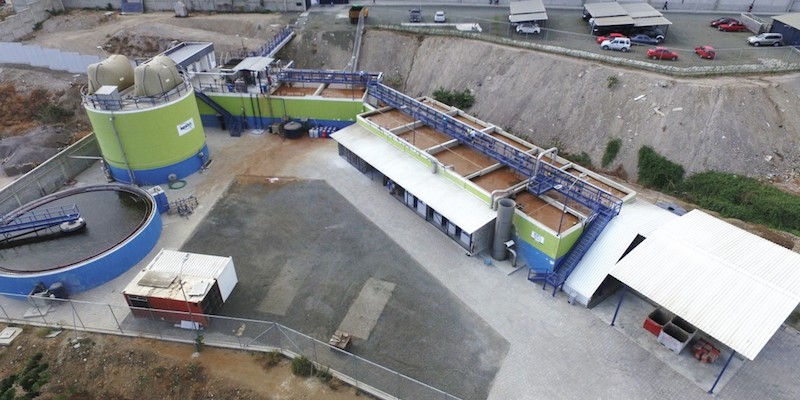
By adding anaerobic anaerobic digestion to its wastewater treatment, the Eurofish tuna processing plant in Ecuador cut energy use by 35-40% and reduced sludge waste by 75%.
Processes like incineration and anaerobic digestion not only provide sources of energy, but they also reduce waste volume
The term “energy recovery” often is applied only to a narrow number of methods for converting wastes into energy, when in fact it applies to a broad range of technologies used to create heat, electricity, or fuel.
Energy recovery gives governments and businesses another way to reduce their waste streams. After recyclable materials have been removed, the remaining waste can be treated to release energy.
According to a 2011 Columbia University study, if all of the unrecycled waste diverted from landfills in the United States were recovered for energy generation, it could power more than 16.2 million American homes, a total of 162 MWh of electricity. This could reduce coal consumption for power generation by 108 million tons.
Waste-to-Energy
There are two types of technologies used generally for converting waste streams into energy: thermal and biological. Thermal waste-to-energy is created by burning trash, while biological processes are typically centered on anaerobic digestion.
However, there are more, as the U.S. Environmental Protection Agency explains:
Energy recovery from waste is the conversion of non-recyclable waste materials into useable heat, electricity, or fuel through a variety of processes, including combustion, gasification, pyrolization, anaerobic digestion, and landfill gas (LFG) recovery. This process is often called waste-to-energy (WTE).
Energy recovery reduces carbon emissions by reducing the need for fossil fuel-based energy sources and also reduces methane emissions generated by landfills.
There is some waste associated with methods that rely on burning trash. Roughly 10% of the volume remains as ash, which usually is landfilled, according to the EPA. Burning waste with energy recovery is not as common in the U.S. as it is in Japan and some European countries where land is at a premium. Landfills are viewed as more attractive in the U.S. because they are a short-term, low-cost option.
Waste-to-Energy Around the World
There were more than 600 waste-to-energy facilities worldwide as of 2010, the most current available data. Roughly 472 of these facilities were in Europe, while Japan had 100 waste-to-energy plants. In the European Union alone, energy recovery through municipal solid waste incineration produced more than 8 million tons of oil equivalent in 2010, with 73 million tons of waste treatment capacity. This capacity is expected to rise to 85 million tons by the end of 2016 and 94 million tons by 2020, according to researchers from the European Commission-Institute for Energy and Transport.
These researchers estimate Africa could supply 20% of its power demand through energy recovery. If energy recovery were employed across the continent, it could generate power for 40 million homes by 2025.
In the U.S. there are now 86 municipal solid waste combustion-energy recovery facilities in 25 states, mostly in the Northeast. No new plants have been built since 1995, according to the EPA. These facilities can produce as much as 2,720 MW a year and treat more than 28 million tons of waste annually. The EPA notes:
Another factor in the slow growth rate of [municipal solid waste] combustion in the United States is public opposition to combustion facilities. These facilities […] have not always had air emission control equipment, thus gaining a reputation as high polluting. In addition, many communities do not want the increased traffic from trucks or to be adjacent to any facility handling municipal waste.
Anaerobic Digestion
This reluctance has prompted many organizations and governments to explore anaerobic digestion, which can treat almost any type of organic matter. It produces biogas and fertilizer, both of which can be reused without generating more waste. The process is often used in farm and food processing to handle wet organic wastes, including livestock manure and food waste, as well as by wastewater treatment facilities.
In a food-processing facility, for example, biogas can be reused as electricity and thermal energy to both reduce operating costs and make the operation greener. One example of this is the Eurofish tuna-processing plant in Ecuador. The plant, which produces a very nutrient-rich effluent, looked to Fluence to add anaerobic digestion to its treatment train. The biogas produced fuels a boiler that creates steam used for processing, cutting energy costs by 35-40%. A notable side benefit is that the treatment also cut sludge waste volume by 75%.
Anaerobic digestion is gaining traction for processing food wastes within municipal solid waste streams in the U.S. and other nations along with the increased need to meet government waste-reduction goals. The American Biogas Council said:
Anaerobic digestion of the organic fraction of [municipal solid waste] provides an engineered and highly controlled process of capturing methane, especially when compared to landfill gas capture of methane generated by putrescible waste. […] The current trend is toward anaerobic digestion of source separated organic waste streams, including food waste, yard trimmings and soiled paper.
Both Germany and Austria have mandates in place requiring that natural gas vehicles use 20%biogas. Germany leads in use, with 6,800 large-scale anaerobic digesters now in operation, followed by Austria with 551 facilities, according to the Center for Climate and Energy Solutions. Anaerobic digestion capacity in the U.S. is expected to increase.
Nickolas J. Themelis, director of the Earth Engineering Center at Columbia University, wrote on the Huffington Post:
[T]he nation’s garbage is an abundant source of energy that’s available right now. And the longer we wait to embrace this energy solution, the more valuable energy we risk losing to landfills at taxpayers’ expense. […] Energy recovery from waste should be part and parcel of the national energy strategy.
